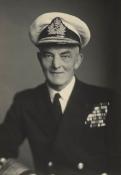
War Memorial
| Lieutenant Commander Arthur John POWER RN | |
|
HMS Princess Royal, Royal Navy Date of birth: 12th April 1889 Date of death: 27th January 1960 Died aged 70 Unknown |

|
| Arthur John Power was born at 27 Penywern Road, South Kensington in London on the 12th of April 1889 the second son of Edward John Power, a grain merchant, and Harriett Maud (nee Windeler) Power of 8 Gledhow Gardens in Kensington. He was christened at St Mary's Church, Long Ditton on the 16th of July 1889. He was educated at Hazelwood School until July 1901 where he was a member of the 2nd Football XI in 1899. He was a member of the Football XI in 1900 when the school magazine wrote the following on his season: - "Left half. A vigorous and hard working half, but rarely in condition to "stay" through a closely contested match; has not yet mastered the knack of shooting low and hard, and is rather prone to spoil good work by hard kicking in lieu of the timely pass." On leaving the school the magazine wrote of him: - "....goes to a Naval Academy. He has done good work in the Football XI and the stage." He went to Mr Eastman's Royal Navy Academy, in preparation for going on to the Britannia Naval College, Dartmouth where he passed as 13th out of sixty in the entrance examinations in the spring of 1904. He went on to the Royal Naval College Dartmouth where he was a member of the Rugby XV. He was Chief Cadet Captain and won the King's Gold Medal in his last term in 1905, also gaining a First Class in his final examinations. He was appointed as a Midshipman in the Royal Navy on the 15th of September 1905 and was posted to the battleship HMS Bulwark on the same day. On the 5th of March 1907 he joined the battleship HMS King Edward VII. He was promoted to Acting Sub Lieutenant on the 15th of January 1909, was promoted to Sub Lieutenant on the 10th of September 1909 and to Lieutenant on the 15th of April 1910. In 1910 he attended an advanced course in Gunnery and Torpedoes at the Royal Naval College Greenwich after which he was posted to the battle cruiser HMS Indomitable. On the 21st of February 1912 he was posted to the destroyer HMS Nautilus as First Lieutenant before being posted in October 1913 to specialise in gunnery. He served at HMS President in 1914/15 and served as Gunnery Officer of the battleship HMS Magnificent, the cruiser HMS Royal Arthur and of the monitor HMS Raglan in the Dardanelles. From the 17th of August 1917 to January 1919 he served as Gunnery Officer for the battle cruiser HMS Princess Royal in the Grand Fleet and was promoted to Lieutenant Commander on the 30th of April 1918. He was promoted to Commander on the 31st of December 1922, after two and half years on the staff of a gunnery school, and was then posted to the Gunnery School, HMS Excellent. After serving as assistant to the Director of Royal Naval Ordnance, he attended a course at the Royal Naval Staff College in 1924/5. From the 27th of July 1925 he was posted as executive officer of HMS Hood where he served for two years before joining the instructional staff at the Royal Naval Staff College. He was promoted to Captain on the 30th of June 1929 and from the 24th of July he served on the Ordnance Committee at Woolwich, HMS President, leaving in February 1931 to command the heavy cruiser HMS Dorchester as Flag Captain and Chief Staff Officer in the Second Cruiser Squadron, Home Fleet until 1933. From January 1934 to July 1935 he was Naval Member of the directing staff at the Imperial Defence College. On the 3rd of October 1935 he was appointed as Commanding Officer of the Gunnery School at Portsmouth, HMS Excellent. He commanded the men from HMS Excellent who manned the field gun carriage for the funeral of King George V on the 28th of January 1936 for which he was appointed as a Commander of the Royal Victorian Order on the 29th of January 1936. In January 1938 he was appointed as Captain of the new aircraft carrier HMS Ark Royal which was being fitted out at Birkenhead. He commissioned her for service the following November and took command on the 16th of November 1938. In January 1939 he addressed the ship�s crew with the words "Is there a man here, with his hand on his heart, who can say we will not be at war in six months." He commanded her from the outbreak of war until he left her at Scapa Flow in May 1940 when, while still a Captain and Naval Aide De Camp to the King, he was appointed as Assistant Chief of Naval Staff (Home). He was promoted to Rear Admiral on the 25th of June 1940 and on the 25th of July 1940 he was appointed as a Commissioner for the execution of the officer of Lord High Admiral. He was appointed as a Knight Commander of the Bath (Military Division) Third Class in the King's Birthday Honours List of the 1st of July 1941 and was awarded the Order of Polonia Restituta, Third Class on the 22nd of December 1942 in recognition of his services to the Polish Navy. In August 1942 he was given command of a cruiser squadron in the Mediterranean but nine months later was appointed as Flag Officer-in-Charge Malta with the acting rank of Vice Admiral. After the Italian surrender he hoisted the flag at Taranto and afterwards held special appointments in Italy. He was promoted to Vice Admiral on the 4th of August 1943 and, at the end of the year, he was appointed as Second in Command of the Eastern Fleet. He was mentioned in despatches on the 21st of December 1943, on the 23rd of May 1944 and on the 15th of August 1944. He was advanced to Knight Commander of the Bath (Military Division) Second Class in the New Year Honours list of the 1st of January 1944. He conducted several bombardments and air strikes in 1944 against Sabang, Sourabaya and other ports held by the Japanese for which he was mentioned in despatches on the 31st of October 1944. In November 1944 he was appointed as Commander in Chief of the East Indies Fleet, a position he held until December 1945. On the 3rd of September 1945, with his flag on HMS Cleopatra, he arrived off Singapore signalling the end of the war in the east and was present at the formal surrender there a few days later. He was awarded the Order of the British Empire (Military Division) in the King's Birthday Honours List of the 1st of January 1946 and was awarded the Legion of Merit (Degree of Commander) by the United States of America on the 29th of January 1946. From February 1946 to March 1948 he was Lord Commissioner of the Admiralty (Second Sea Lord) and was Chief of Naval Personnel. On the 6th of May 1946 he was promoted to Admiral and on the 13th of May 1948 he was appointed as Commander in Chief for the Mediterranean station. He was promoted to Admiral of the Fleet on the 22nd of April 1952 and retired from the Navy in September 1952. He was married to Amy Isabel (nee Bingham) at the Holy Trinity Church, Prince Consort Road on the 6th of April 1918; they had three sons; the first was born on the 28th of October 1919, Arthur Mackenzie, born on the 18th of June 1921 and Michael George, born on the 2nd of April 1924. He became a member of the Council of the friends of Winchester Cathedral in March 1953 and served as Chairman of the Winchester Cathedral Preservation Fund in 1958. His wife Amy died in 1945 and he was married again in 1947 to Margaret Joyce (nee Watson) a WRNS officer. He lived at Lime Cottage, Brambridge Hampshire and was a member of the United Services Club. He died at hospital in Gosport. |
|
| Went on to Eastman's Royal Navy |
Back